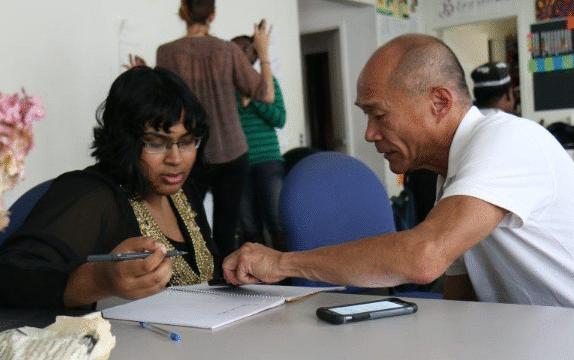Earning a learning certificate is always a moment
of achievement. It represents the time and effort
you have invested in building new knowledge,
developing new skills, and showing your commitment to personal or professional growth. But once the certificate is in your hands, many people find themselves asking a natural question: what comes next? A learning certificate can open doors, strengthen your career, and even boost your confidence, but only if you put it to good use. By taking some thoughtful steps, you can ensure that your certificate becomes more than just a paper on your shelf and instead serves as a real stepping stone toward new opportunities.
One of the first things to do after receiving a learning certificate is to make it visible in your professional life. Many learners overlook this simple yet powerful step. Adding the certificate to your resume is a practical start. Employers often look for evidence of continuous learning, and including certifications highlights your dedication to staying current in your field. Beyond the resume, updating your LinkedIn profile or other professional networking platforms is another effective way to showcase your accomplishment. When you display a certificate online, it not only strengthens your profile but also communicates to colleagues and recruiters that you are proactive about advancing your skills.
After celebrating your success, it is also wise to think about how your new knowledge fits into your current role or career path. Ask yourself how the concepts you learned can be applied in your workplace or personal projects. If the certificate was related to technology, you might be able to use the skills to streamline processes at work. If it was in communication or leadership, you might find yourself better equipped to lead a team or handle challenging conversations. By applying what you learned, you make the certificate more meaningful and prove that the education behind it has practical value.
Networking is another important step that often begins after you have completed a certificate. Many certificate programs have alumni groups, discussion boards, or communities where past and present learners share experiences and opportunities. Staying active in these groups can provide access to job postings, collaborations, and professional advice. Networking does not have to feel forced or formal. Even a simple message to a fellow graduate acknowledging shared learning experiences can lead to meaningful connections. Over time, these professional relationships may help you discover new career options or projects that align with your goals.
You may also want to consider using your learning certificate as a foundation for further education. Often, a certificate sparks curiosity and inspires learners to go deeper into a subject. For instance, a certificate in project management might encourage you to pursue an advanced credential in that field. Similarly, a certificate in digital marketing could be the first step toward a diploma or even a degree. By stacking learning experiences, you build a portfolio of knowledge that sets you apart in competitive environments. Think of each certificate as a building block rather than an endpoint.
For those who are seeking career advancement, a certificate can be a valuable talking point in performance reviews or job interviews. It shows initiative and self-motivation, two qualities that many employers admire. When discussing your certificate with a supervisor or recruiter, do not just mention the fact that you earned it. Instead, explain what you learned and how it relates to the goals of the organization. For example, if you completed a certificate in data analysis, you can highlight how your new skills can help your company make more informed decisions. By presenting your certificate in terms of its benefits to your workplace, you make a stronger impression.
Another rewarding path is sharing your knowledge with others. Teaching or mentoring can deepen your own understanding while helping colleagues or friends. If you gained new expertise in a technical subject, you could offer to host a short workshop at work. If your certificate was in an area like communication, you could provide guidance to teammates on effective practices. Sharing your learning not only builds your reputation as a resourceful professional but also strengthens your leadership qualities. In many cases, teaching is a natural way to reinforce and expand on what you have already learned.
Sometimes, the best way to use a learning certificate is to explore new directions. If your certificate is in a field outside your current work, it may open the possibility of a career shift. For example, a person working in finance who earns a certificate in web development might consider applying for entry-level roles in the technology sector. Certificates often give people the confidence to explore career changes that once felt out of reach. While the transition may require patience, your certificate demonstrates that you have already taken the first step toward building the necessary skills.
Another step to take after receiving your certificate is to track the progress it brings to your personal or professional growth. Set goals that relate to the new skills you learned and measure how often you apply them. Reflect on whether the certificate has helped you achieve promotions, new responsibilities, or personal achievements. By evaluating the impact, you can decide whether to pursue additional certificates or whether to focus on applying the knowledge you already have. Reflection ensures that your learning remains active and purposeful rather than something that fades with time.
Certificates can also be motivational tools. Whenever you feel uncertain about your abilities, looking back at the certificate can remind you of your commitment and determination. Learning is not always easy, and completing a program requires persistence. The certificate is proof that you are capable of setting a goal, following through, and achieving it. Keeping this reminder visible in your workspace can inspire you to tackle new challenges with confidence.
Finally, do not forget to celebrate your accomplishment. While practical steps like updating your resume and applying new skills are essential, it is equally important to acknowledge the effort you invested. Share the news with family and friends, treat yourself to a small reward, or simply take pride in the fact that you completed a meaningful milestone. Celebrating achievements builds a positive cycle of motivation, encouraging you to continue learning and growing.
In the end, receiving a learning certificate is both an achievement and an opportunity. It represents more than just hours of study; it signals your willingness to grow and adapt in a world where continuous learning is highly valued. By making your certificate visible, applying your knowledge, networking with peers, pursuing further learning, sharing your expertise, and reflecting on your progress, you transform a piece of paper into a tool for growth. Whether you use it to advance your current career, pivot to a new one, or simply deepen your personal development, your learning certificate has the potential to shape your future in meaningful ways. The key is to take thoughtful action and treat it as the beginning of your next journey.






